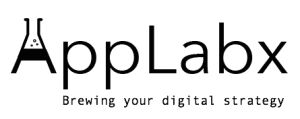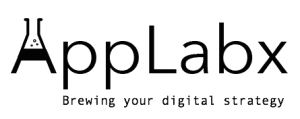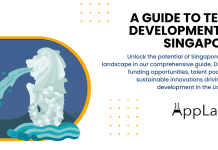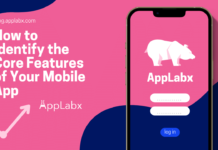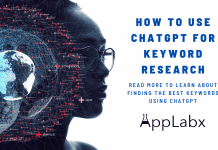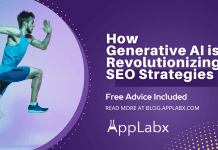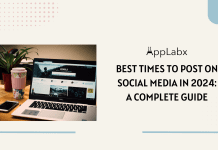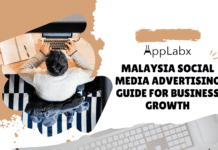Key Takeaways
- Content marketing in 2025 is driven by AI-powered workflows, short-form video, and interactive experiences that maximize engagement and ROI.
- Brands must focus on audience-first E-E-A-T strategies, building authority and trust to remain relevant in a saturated digital ecosystem.
- Data-driven measurement frameworks and multi-format repurposing are essential for proving ROI and sustaining long-term content success.
The global content marketing industry in 2025 has reached a pivotal inflection point, transitioning from a maturing discipline into one of the most sophisticated and data-driven pillars of digital marketing. Content marketing is no longer simply about publishing blogs or posting on social media—it has become a strategic ecosystem that integrates artificial intelligence, interactive experiences, audience-first storytelling, and performance-driven measurement frameworks. Businesses across industries are allocating larger portions of their marketing budgets to content, recognizing it as a key driver of brand visibility, lead generation, and long-term customer loyalty.

At the heart of this evolution lies a convergence of three critical forces: shifting consumer behavior, rapid technological advancement, and the rising expectation for measurable business outcomes. Audiences are no longer satisfied with generic or surface-level content. Instead, they demand value-rich, hyper-personalized, and trustworthy information delivered across multiple formats—short-form video, podcasts, interactive tools, live streams, and deeply researched thought-leadership articles. This change in expectations has intensified competition, with over 77% of marketers reporting challenges in achieving organic visibility and meeting user intent.
Equally transformative is the economic dimension of content marketing in 2025. The cost of producing high-quality content continues to rise, with businesses investing anywhere between $5,000 and $50,000 per month on agencies, freelancers, and technology platforms to remain competitive. ROI has become the north star metric, and forward-thinking brands are increasingly shifting away from vanity metrics like impressions and clicks, focusing instead on metrics that tie directly to revenue, such as customer lifetime value, pipeline contribution, and retention rates.
Another defining trend is the integration of artificial intelligence into the content lifecycle. AI is not replacing human creativity but augmenting it—streamlining research, generating first drafts, optimizing headlines for SEO, and analyzing audience engagement data at scale. This AI-human hybrid model allows content teams to allocate more time to strategy, storytelling, and authenticity, ensuring that content resonates with both algorithms and real human readers.
Content distribution strategies have also evolved significantly. Relying solely on third-party platforms like Facebook or Instagram is no longer sufficient, given the sharp decline in organic reach and the increasing volatility of platform algorithms. Brands are doubling down on building owned media channels—email lists, branded communities, and proprietary content hubs—to create direct, algorithm-proof relationships with their audience.
The year 2025 is also marked by a heightened emphasis on E-E-A-T (Experience, Expertise, Authoritativeness, and Trustworthiness) as a core ranking factor. In the era of AI-generated summaries and zero-click searches, the brands that succeed are those that are recognized as credible, authoritative sources by both search engines and consumers. This makes original research, expert insights, and data-backed narratives essential components of any successful content strategy.
In this comprehensive report, readers will find a deep exploration of the key global trends shaping content marketing in 2025, the evolving economics of content creation, and the strategies leading brands are using to stay ahead. The analysis will cover budget allocation patterns, emerging high-ROI content formats, the growing role of interactive media, and best practices for measuring ROI across the customer journey. By the end of this report, businesses and marketers will gain a clear understanding of how to navigate an increasingly competitive digital landscape, optimize their resources, and future-proof their content strategies for the years ahead.
But, before we venture further, we like to share who we are and what we do.
About AppLabx
From developing a solid marketing plan to creating compelling content, optimizing for search engines, leveraging social media, and utilizing paid advertising, AppLabx offers a comprehensive suite of digital marketing services designed to drive growth and profitability for your business.
At AppLabx, we understand that no two businesses are alike. That’s why we take a personalized approach to every project, working closely with our clients to understand their unique needs and goals, and developing customized strategies to help them achieve success.
If you need a digital consultation, then send in an inquiry here.
Or, send an email to [email protected] to get started.
The State of Global Content Marketing in 2025: A Comprehensive Report
- The Global Content Marketing Economy in 2025
- The Format Revolution: Shifting Audience Consumption and Preferences
- The AI-Powered Content Engine: From Assistant to Overlord?
- The Economics of Content: Costs, Budgets, and Strategic Allocation
- Strategic Challenges and Forward-Looking Opportunities
- The Future of Content is Human-Centric, Data-Driven, and Multi-Format
1. The Global Content Marketing Economy in 2025
a. Market Overview and Core Metrics
Market Overview and Global Significance
In 2025, the global content marketing ecosystem has reached an unprecedented level of maturity, becoming an indispensable pillar of modern marketing strategies across industries. Content marketing is no longer a secondary or experimental approach but a primary driver of brand awareness, customer engagement, and revenue growth. Independent research indicates that approximately 82% of global businesses actively employ content marketing, with adoption rates sitting at 73% among B2B marketers and 70% within B2C sectors.
Within the B2B space, content marketing is deeply ingrained, with 97% of organizations integrating it as a core element of their overall marketing strategies. This high level of adoption signals that the discipline has transitioned from a tactical option to a strategic imperative.
Strategic Investment and Budget Expansion
One of the most telling indicators of this shift is the rise in financial commitment toward content initiatives. More than half of global marketers reported increasing their content marketing budgets for 2024 and 2025, emphasizing its central role in growth-focused marketing programs.
The trend toward larger-scale investment is particularly noteworthy:
- The percentage of companies allocating over $45,000 per month to content marketing nearly tripled from 4.1% in 2024 to 11.4% in 2025.
- On average, marketing budgets represent 9.4% of a company’s total revenue, with content marketing commanding 10.2% of that expenditure.
This surge in high-value spending highlights a strategic recognition that content marketing is not simply about creating content but about building a scalable, measurable, and revenue-generating growth engine.
Growth of Specialized Content Formats
The evolution of the content marketing economy is not only reflected in budget size but also in the diversification of content formats and platforms. Companies are no longer relying solely on blogs and static articles. Instead, they are investing in dynamic, high-engagement content verticals such as podcasts, interactive videos, and data-rich whitepapers.
For example, the global podcasting industry is projected to reach a market size of $38.36 billion in 2025, representing a 27.6% CAGR between 2023 and 2030. At the same time, digital audio advertising spend is forecasted to hit $12.16 billion in 2025, indicating that businesses are leveraging audio-based content not just for brand storytelling but also as a scalable paid media channel.
Global Content Marketing Budget Allocation
The distribution of content marketing spend varies significantly by business size, reflecting differing objectives, resource availability, and market reach. The table below illustrates the typical monthly budget allocation across business tiers in 2025:
| Business Size | Monthly Budget Range (2025) |
|---|---|
| Small Business | $4,000 – $10,000 |
| Mid-Sized Business | $10,000 – $40,000 |
| Enterprise-Level Business | $40,000 – $60,000+ |
This data highlights a growing democratization of content marketing. Small and mid-sized businesses are entering the field with modest but increasing investments, while enterprise-level companies are leading the charge with large-scale spending that supports multi-channel, data-driven campaigns.
Strategic Takeaways for 2025
The state of content marketing in 2025 reveals three critical insights for businesses seeking to stay competitive:
- Content as a Growth Lever: Companies that invest strategically in content marketing are not merely driving brand awareness but building sustainable revenue streams.
- Format Diversification is Crucial: Podcasting, video, and interactive formats are outperforming traditional static content, demanding a reallocation of budgets.
- Data-Driven Strategies Dominate: Successful brands are leveraging analytics and AI to optimize distribution, measure ROI, and refine messaging at scale.
b. Strategic Goals and ROI Benchmarks
The Strategic Imperatives Driving Content Marketing
In 2025, content marketing continues to be the cornerstone of brand-building and revenue-driving strategies for businesses across sectors. The focus remains firmly anchored on achieving top-of-funnel and mid-funnel objectives, with B2B marketers placing a heightened emphasis on initiatives that build trust, engage audiences, and move prospects closer to conversion.
Key priorities include:
- Brand Awareness: A dominant 87% of B2B marketers identify brand visibility and recognition as their top goal. Content is increasingly designed to tell compelling brand stories, establish thought leadership, and position organizations as authoritative voices in their industries.
- Demand Generation & Lead Acquisition: Approximately 74% of B2B marketers focus on generating high-quality leads through gated assets, webinars, and search-optimized resources that drive inbound traffic.
- Audience Nurturing & Engagement: 62% prioritize creating meaningful, educational touchpoints that retain existing customers and move them through the buyer journey with relevant, personalized content.
This evolution underscores the role of content not just as a creative exercise but as a strategic lever for customer acquisition and retention.
ROI Benchmarks and Economic Impact
The financial case for content marketing remains compelling, with industry benchmarks demonstrating superior cost efficiency compared to traditional outbound approaches.
| Metric | Benchmark Value (2025) |
|---|---|
| Cost Savings vs. Outbound Marketing | 62% cheaper |
| Lead Generation Impact | 3× more leads per dollar spent |
| Average ROI (B2B Content Marketing) | $2–$3 returned per $1 invested |
| Email Marketing ROI | $36 generated per $1 spent |
| Positive ROI from Video Marketing | 93% of marketers report success |
This data highlights that content marketing is not only cost-effective but also one of the highest-yielding investments within the marketing mix. Email marketing continues to lead as the most lucrative channel, while video content remains one of the most universally endorsed tactics for ROI generation.
The ROI Measurement Challenge
Despite these encouraging performance metrics, organizations face a persistent challenge in accurately quantifying content’s contribution to business outcomes. A significant measurement gap exists, resulting in under-optimized strategies and untapped potential.
- Measurement Confidence: Only 48% of enterprise marketers report being satisfied with their ability to measure content performance effectively.
- Customer Journey Tracking Issues: 61% admit difficulty in tracing user journeys from initial engagement to final conversion.
- ROI Attribution Problems: 63% struggle to clearly connect content assets to tangible business results, creating internal friction when justifying budgets.
This measurement disconnect creates a paradox: while brands are committing record-high budgets to content, their ability to prove impact lags behind investment levels.
Toward a Data-Driven Measurement Framework
Industry analysts suggest that the next frontier in content marketing lies in building sophisticated, outcome-oriented measurement frameworks. These systems must integrate advanced analytics, multi-touch attribution models, and AI-powered insights to establish a clear line of sight from content creation to business impact.
A content ROI maturity matrix can be a valuable tool to guide organizations toward better measurement practices:
| Maturity Level | Characteristics | Business Impact |
|---|---|---|
| Basic Measurement | Tracks vanity metrics such as page views and clicks | Limited insight into ROI |
| Intermediate Measurement | Incorporates engagement, lead gen, and conversion rates | Provides directional performance data |
| Advanced Measurement | Leverages attribution models, AI-driven analytics, and revenue mapping | Demonstrates direct financial impact and optimizes spend |
Companies that advance toward the “Advanced Measurement” tier are best positioned to justify budgets, optimize campaigns, and achieve long-term competitive advantage.
2. The Format Revolution: Shifting Audience Consumption and Preferences
a. The Ascendancy of Video and Visual Storytelling
The Rise of Video as the Dominant Content Medium
In 2025, video has firmly established itself as the undisputed centerpiece of the global content marketing landscape. No longer simply one format among many, video now drives engagement strategies for brands seeking to capture increasingly fragmented attention spans. Short-form video, in particular, continues to lead the charge, powered by platforms such as TikTok, Instagram Reels, and YouTube Shorts.
Recent research indicates that 29.18% of marketers actively use short-form video as a core part of their strategies, while 17.13% have committed to increasing their investment in this format over the next year. This marks the fourth consecutive year in which video has topped the list of most-created content types, solidifying its place as the most scalable and highest-performing asset in the modern marketer’s toolkit.
Consumer Demand for Video-First Experiences
The growing dominance of video is not simply a marketer-driven trend; it is a direct response to evolving consumer expectations. Studies show that 83% of consumers want to see more video content from the brands they follow, signaling a shift toward immersive, visual-first storytelling as the preferred medium for communication.
- Product Discovery: Short-form video plays a critical role in influencing purchase decisions, with 44% of consumers preferring to learn about new products or services through video rather than text-based content.
- Emotional Engagement: Video has proven to deliver stronger emotional resonance, leading to higher retention rates and more memorable brand experiences.
- Mobile-First Alignment: The rise of smartphone consumption has further amplified video’s relevance, as vertical, mobile-optimized videos meet users where they are most active.
Visual Storytelling Beyond Video
While video leads the pack, other forms of visual content continue to play an essential role in a diversified content strategy. Static imagery, infographics, and data visualizations remain powerful tools for delivering information in a concise, engaging format.
| Visual Content Format | Key Benefit | Impact on Engagement |
|---|---|---|
| Short-Form Video | Fast, emotionally compelling storytelling | Highest share of engagement and conversions |
| Infographics | Simplifies complex data for rapid comprehension | 30× more likely to be read than text-only articles |
| Static Images | Builds brand consistency across social channels | Improves CTR and social reach |
| Data Visualizations | Supports thought leadership and authority building | Boosts shareability and SEO performance |
Notably, infographics can increase website traffic by up to 12%, underscoring their value as both a branding and SEO asset.
Strategic Implications for Marketers
The data suggests that brands must now adopt a visual-first content strategy to remain competitive. This involves:
- Allocating a significant portion of marketing budgets toward short-form and interactive video.
- Embedding video at key customer journey stages, from awareness to post-purchase engagement.
- Combining video with complementary visual assets such as infographics to maximize multi-channel impact.
- Leveraging data analytics to measure performance and continuously optimize format selection.
b. The Resurgence of Audio: Podcasting’s Strategic Value
The Global Boom of Audio Content
In 2025, audio content has re-emerged as one of the most influential and strategically valuable channels for brand storytelling and audience engagement. Podcasting, in particular, has transitioned from niche entertainment to a mainstream marketing powerhouse. Global podcast listenership has reached 584.1 million, reflecting a 6.83% year-over-year growth rate, making it one of the fastest-expanding digital content formats.
This growth has not gone unnoticed by marketers. One in four marketers (25%) now actively incorporate podcasts or other audio-based formats into their content strategies, with 47% planning to increase their budget allocation for audio initiatives in the coming year. The surge in audio adoption is fueled by its ability to create highly personal, trust-building experiences that resonate with audiences during commutes, workouts, and other moments of undivided attention.
The Economics and ROI of Podcast Advertising
The business case for audio is compelling, with podcasts driving measurable impact on brand awareness and conversions. Nearly 46% of weekly podcast listeners report making a purchase after hearing a podcast advertisement, making this format one of the most conversion-friendly in the digital marketing mix.
| Metric | 2025 Benchmark |
|---|---|
| Global Podcast Listeners | 584.1 million |
| YoY Growth Rate | 6.83% |
| Marketers Using Audio Formats | 25% |
| Marketers Increasing Audio Budgets | 47% |
| Listener Purchase Influence | 46% |
This data positions audio as both a performance channel and a brand-building platform, offering marketers an opportunity to capture attention in an uncluttered environment compared to text or display advertising.
Multi-Format Content Repurposing as a Growth Strategy
Audio’s resurgence is part of a broader multi-channel consumption shift. Modern audiences engage across an average of 6.83 social platforms per month, meaning single-format strategies risk missing significant engagement opportunities. The most successful brands in 2025 are implementing multi-format repurposing strategies that amplify their reach while optimizing creative efficiency.
Example of a repurposing workflow:
- Long-Form Blog Post: Serves as the foundational thought-leadership asset.
- Podcast Episode: Converts key insights from the blog into an engaging, conversational format.
- Short-Form Video: Extracts highlights for TikTok, Reels, or Shorts to boost discovery.
- Social Visuals & Carousels: Share data points and quotes to drive engagement on LinkedIn, X, and Instagram.
This approach ensures that a single idea or research piece achieves maximum visibility across multiple touchpoints, strengthening brand presence and improving ROI per asset.
Strategic Implications for Marketers
The revival of audio signals a paradigm shift toward immersive, voice-driven brand experiences. Organizations that invest in podcasting and audio-first content are gaining a competitive advantage in:
- Building Deeper Trust: The intimate, one-to-one nature of audio fosters stronger emotional connections with audiences.
- Owning Share of Voice: Brands that act early in the audio space establish themselves as category leaders.
- Driving Full-Funnel Impact: Audio is no longer a top-of-funnel awareness tool only — it is now a measurable conversion driver.
c. The Interactive Imperative: Beyond Passive Consumption
The Rise of Interactive Content as a Growth Engine
In 2025, interactive content has emerged as a central driver of engagement in an increasingly saturated digital ecosystem. Brands are recognizing that audiences no longer want to simply consume information passively; instead, they seek immersive, two-way experiences that allow them to participate, learn, and personalize their journey.
Interactive assets—quizzes, assessments, ROI calculators, polls, interactive infographics—have proven to be twice as engaging as static content, delivering a 52.6% higher engagement rate overall. On average, users spend 13 minutes engaging with interactive content, compared to 8.5 minutes on static formats, demonstrating its superior ability to hold attention in an era of diminishing attention spans.
The Economics of Engagement and Conversion
The shift to interactive content is not just a creative trend but a measurable business decision. Its ability to generate qualified leads at a lower cost makes it one of the most efficient top-of-funnel tools available to marketers.
- Lead Generation Performance: Interactive quizzes boast completion rates as high as 80%, with 65% of users voluntarily sharing their contact information, resulting in a rich pool of first-party data.
- Cost Efficiency: The average cost per qualified lead (CPL) from interactive quizzes is $7, significantly lower than the $15 CPL from static blog posts. ROI calculators and assessments perform even better, driving leads at $5–$9 per conversion.
- Hyper-Personalization Enablement: The data collected through interactive experiences allows brands to deliver tailored follow-up messaging, nurture sequences, and product recommendations, ultimately increasing downstream conversion rates.
Benchmarking ROI and Conversion Rates by Content Type
The table below compares the performance of key content formats in terms of ROI, conversion rates, and cost efficiency, providing marketers with a clear picture of where to focus their budgets in 2025:
| Content Format | Average ROI | Average Conversion Rate | Cost per Qualified Lead |
|---|---|---|---|
| Short-Form Video | 890% | 3.5% (TikTok), 2.8% (Instagram) | $0.25 per 1,000 views |
| AI-Enhanced Podcasts | 650% | N/A | $200 per episode (vs. $500 for traditional) |
| Interactive Content | 520% | 2× higher than static formats | $7 (quiz), $9 (assessment), $5 (ROI calculator) |
| Long-Form Guides | N/A | 2.9% | $15 (static blog post) |
| Case Studies | N/A | 2.7% | N/A |
| Product Comparisons | N/A | 2.4% | N/A |
This performance matrix underscores that interactive content is not merely a complement to existing formats but a strategic centerpiece for brands aiming to maximize marketing efficiency.
Strategic Implications for Content Marketers
The growth of interactive formats highlights a broader paradigm shift in digital marketing strategy:
- From Broadcast to Dialogue: Brands must pivot from one-directional messaging to active engagement, allowing users to shape their own experiences.
- From Static Data to First-Party Insights: Interactive content offers a reliable method for collecting privacy-compliant, first-party data, a crucial advantage in a post-cookie marketing world.
- From Vanity Metrics to Revenue Metrics: By connecting engagement to lead generation and ultimately to revenue, interactive formats prove their value not just as attention-grabbers but as full-funnel performance drivers.
d. The Evolving Role of Text and SEO
The Enduring Power of Text-Based Content
While video, audio, and interactive formats have captured much of the spotlight, text-based content remains a foundational pillar of global content marketing strategies in 2025. The demand for long-form, information-rich, and search-optimized written material is stronger than ever, driven by both audience preferences for depth and search engines’ prioritization of comprehensive, authoritative resources.
The average blog post length now sits at 1,400 words, representing a 77% increase compared to a decade ago, signaling that audiences continue to seek detailed and nuanced insights rather than shallow summaries. Businesses that consistently publish high-quality blogs enjoy a 67% higher monthly lead generation rate compared to those without an active blog, demonstrating its direct impact on demand creation and pipeline growth.
The Competitive Challenge of Text in a Saturated Market
However, the written content ecosystem has become intensely competitive, requiring brands to rethink their approach to text creation and distribution. The digital landscape is oversaturated with articles, and audience attention is increasingly selective.
- Backlink Scarcity: 94% of published blog posts receive zero backlinks, significantly limiting their organic visibility and SEO authority.
- Skewed Content Distribution: Only 1.3% of online articles capture 75% of total social shares, meaning the vast majority of content fails to reach its intended audience.
This data illustrates that the barrier to success is no longer simply publishing consistently, but publishing with a level of quality, originality, and relevance that compels engagement and earns algorithmic favor.
Strategic Imperatives for Text-Based Content in 2025
The rise of AI-generated content has intensified the importance of differentiation through human-centric, authoritative storytelling. Businesses must invest in text formats that deliver unique insights, proprietary research, and brand personality that AI cannot easily replicate.
Key strategies include:
- Original Research & Data-Driven Insights: Publishing proprietary studies, industry benchmarks, and expert commentary to build trust and authority.
- Topic Specialization: Focusing on niche, high-intent subject areas to attract a targeted audience rather than competing for overly broad keywords.
- Brand Voice Development: Cultivating a recognizable tone and perspective that fosters loyalty and distinguishes a brand from commoditized AI content.
- E-E-A-T Alignment: Creating content that meets Google’s Experience, Expertise, Authoritativeness, and Trustworthiness standards to maintain search visibility.
Performance Benchmarks for Text-Based Content
The following table highlights performance indicators for text and SEO-driven content in 2025, emphasizing the need for a more strategic and quality-driven approach:
| Content Metric | 2025 Benchmark | Strategic Insight |
|---|---|---|
| Average Blog Post Length | 1,400 words | Longer, more detailed posts perform better in search rankings |
| Lead Generation Lift from Blogging | +67% vs. non-blogging brands | Reinforces blogging as a revenue-driving channel |
| Blog Posts Receiving Backlinks | 6% (only) | High-quality, link-worthy assets are rare and valuable |
| Articles Capturing 75% of Social Shares | 1.3% of all online articles | Highlights need for standout, shareable content |
| AI-Generated Content Competition | Growing exponentially | Differentiation via originality and expertise is essential |
The Future of SEO-Optimised Text
As search engines integrate more AI-driven results and zero-click search experiences, text-based content will need to evolve beyond keyword targeting and focus on contextual depth, semantic richness, and user intent alignment. Content strategies will increasingly combine human expertise, multimedia integration, and structured data to stand out in SERPs and deliver value directly within search experiences.
Brands that succeed will be those that elevate text from a commodity to a competitive advantage—delivering insightful, credible, and memorable written experiences that build both search authority and long-term audience trust.
3. The AI-Powered Content Engine: From Assistant to Overlord?
a. The Widespread Adoption of AI Tools
The Ubiquity of AI in Content Marketing Workflows
In 2025, artificial intelligence has transitioned from a novel experiment to an indispensable component of global content marketing strategies. Nearly nine out of ten marketers (89%) actively leverage AI tools, making AI adoption one of the most defining shifts in the industry. However, its use remains largely collaborative rather than fully autonomous, reflecting a broader consensus that AI should amplify, not replace, human creativity.
Current data illustrates this balance clearly:
- 67% of marketers integrate AI regularly, but its primary application remains centered on efficiency rather than full-scale automation.
- 54% use AI for idea generation, allowing teams to accelerate brainstorming, identify trending topics, and discover semantic keyword opportunities.
- Only 6% rely on AI to produce entire articles end-to-end, demonstrating that most professionals still see human oversight as critical to quality, authenticity, and brand voice.
AI’s Measurable Impact on Content Performance
The tangible benefits of AI adoption are reshaping how marketing leaders evaluate ROI. By delegating repetitive tasks such as research compilation, outline generation, and SEO optimization to AI, creative teams are free to concentrate on tasks that require judgment, emotional intelligence, and strategic thinking.
Key performance findings include:
- 79% of content marketers report improved content quality following AI integration, citing better readability, improved SEO alignment, and consistency across campaigns.
- 68% observe stronger ROI, attributing gains to faster production cycles and more data-driven optimization.
- AI’s most common applications include:
- Optimizing Existing Content (51%) – Enhancing older assets for relevance, freshness, and SEO strength.
- Generating New Content (43%) – Producing drafts, captions, and structured frameworks for human refinement.
- Brainstorming and Ideation (40%) – Facilitating topic discovery and trend analysis to align with audience demand.
The Human Element: Where AI Falls Short
Despite its efficiency, AI’s limitations underscore the enduring necessity of human expertise. Only 1% of enterprise marketers rate AI-generated content as “excellent,” indicating that AI output frequently lacks originality, narrative cohesion, and emotional resonance.
In 2025, the highest-performing marketing teams are those that combine AI’s computational speed with human creativity. Successful content programs prioritize:
- Original Research & Proprietary Data – Offering insights that AI cannot scrape or replicate.
- Human Storytelling – Embedding personal narratives, emotion, and brand personality into messaging.
- Editorial Judgment – Ensuring nuance, tone, and ethical considerations are applied to every piece.
This human-AI symbiosis has emerged as the gold standard for scalable yet differentiated content production.
AI Adoption and Impact Matrix for 2025
| AI Application in Content Marketing | Adoption Rate | Reported Benefit | Human Oversight Requirement |
|---|---|---|---|
| Idea Generation & Brainstorming | 54% | Faster campaign planning, broader topic discovery | Moderate – creative validation needed |
| Content Optimization & SEO Refresh | 51% | Higher search visibility, improved ranking | Low – automated suggestions often reliable |
| Content Drafting & Frameworks | 43% | Faster production cycles, reduced workload | High – human refinement critical |
| Full-Length Article Generation | 6% | High speed, low cost | Very High – requires heavy editing to meet quality |
| Predictive Performance Analytics | Growing rapidly | Better forecasting of engagement & ROI | Moderate – final strategy still human-driven |
The Strategic Future of AI in Content Marketing
Looking ahead, AI is poised to evolve from a tactical assistant to a strategic partner, capable of predictive modeling, hyper-personalized content delivery, and cross-channel performance orchestration. However, as AI’s influence grows, so does the premium on authenticity, creativity, and ethical governance. Brands that master the integration of AI tools while safeguarding originality and trust will be positioned as leaders in the next era of global content marketing.
b. The New SEO Frontier: AI Overviews and the Fight for Visibility
The Rise of AI Overviews and Its Disruptive Impact
The search landscape of 2025 has entered a new era, marked by the rapid proliferation of AI Overviews (AIOs) across major search engines. These AI-generated summaries sit prominently at the top of search results, synthesizing information from multiple sources and delivering concise, conversational answers. Data from Q1 2025 highlights the speed of this transformation: the share of queries triggering AIOs surged from 6.49% in January to 13.14% in March, representing a striking 72% increase in just two months.
This development poses the most significant challenge to top-of-funnel, informational content, with 88.1% of triggered AIO queries falling into the informational category. This means that content traditionally designed to attract users early in their buying journey now faces the risk of zero-click behavior, as users find their answers directly in the overview without clicking through to a brand’s website.
The Complexity Behind Zero-Click Behavior
While the rise of AIOs appears to signal a decline in organic clicks, deeper research reveals a more nuanced picture. Zero-click rates have not consistently increased since AIOs became widespread, suggesting that these overviews function as an additional layer of search experience rather than a full replacement of traditional results.
This has two implications for marketers:
- Visibility is no longer binary. A brand may not receive a click but may still achieve visibility and authority if its content is cited within the AI-generated summary.
- Search strategy must evolve from simply “ranking” to “being referenced,” positioning content as the information backbone for AI systems.
The Strategic Imperative: From Keywords to Authority Signals
In this new environment, the focus of SEO must shift from pure keyword optimization to credibility, depth, and semantic coverage. Search engines’ AI models prioritize sources that demonstrate E-E-A-T (Experience, Expertise, Authoritativeness, and Trustworthiness) — a framework that has become central to 2025 SEO strategy.
Key adjustments for future-ready SEO include:
- Prioritizing Original Research – Unique, data-rich content that cannot be easily replicated increases the likelihood of selection by AI models.
- Enhancing Content Structure – Well-organized, clearly formatted content improves machine readability, increasing the chance of being used for summarization.
- Building Topical Authority – Creating a content ecosystem that thoroughly covers a subject signals expertise and increases brand credibility.
- Optimizing for Context, Not Just Keywords – Natural language optimization and semantic clustering help AI understand relevance beyond exact-match keywords.
Industry-Specific AIO Growth Trends
The impact of AI Overviews is not uniform across industries. Sectors dealing with highly factual, research-driven, or complex topics have seen the largest percentage point growth, with science and health queries showing the most significant increase.
| Industry | Percentage Point Growth (Jan–Mar 2025) |
|---|---|
| Science | +22.27% |
| Health | +20.33% |
| People & Society | +18.83% |
| Law & Government | +15.18% |
| Commercial Queries | Increased from 6.28% to 8.69% |
These figures underscore the urgency for brands operating in these industries to invest in authoritative, medically or legally reviewed, and factually rigorous content to remain visible in an increasingly AI-mediated search experience.
The Future of SEO in the AI Era
As AIO adoption accelerates, SEO is transitioning from a SERP-first discipline to an audience-first discipline. The true metric of success is no longer merely ranking but influencing the narrative that AI delivers to the user. This shift encourages brands to think beyond clicks, focusing instead on shaping perception, building trust, and ensuring that their expertise becomes a cornerstone of the information ecosystem.
Looking forward, organizations that master this paradigm — blending semantic SEO, thought leadership, and technical excellence — will not only survive the AIO disruption but emerge as the most trusted sources in their respective fields.
4. The Economics of Content: Costs, Budgets, and Strategic Allocation
a. The Cost of Content Creation by Format
Understanding the True Cost of Content Creation
In 2025, the economics of content marketing have evolved into a sophisticated balancing act between budget allocation, production quality, and measurable returns. The cost of producing content is no longer perceived as a fixed line item but as a strategic investment tied directly to its potential for brand visibility, lead generation, and long-term authority building.
The market has matured to recognize that low-cost, generic content often delivers negligible ROI, while highly researched, expert-driven, and multimedia-rich assets generate outsized results, including backlinks, brand mentions, and qualified leads. This shift has encouraged brands to adopt a value-based budgeting model, where investment decisions are guided by anticipated performance rather than minimum cost.
Strategic Insights: Where Brands Are Spending in 2025
Modern content marketing budgets are increasingly allocated toward formats with the highest engagement, shareability, and conversion potential. The focus is on quality over quantity, with many organizations opting to produce fewer but more impactful assets that support multi-channel distribution and repurposing strategies.
Notably, video continues to dominate spending due to its ability to deliver immersive, emotionally resonant storytelling, while interactive formats are gaining traction for their ability to capture first-party data in a privacy-conscious digital environment.
Comparative Breakdown: Content Creation Costs by Format and Quality
| Content Format | Average Cost Range (2025) | Strategic Value & Notes |
|---|---|---|
| Blog Posts | $100 – $6,000 | Low-end posts ($100–$400) are suitable for volume publishing, but high-impact, data-driven articles ($1,500–$6,000) drive backlinks, search visibility, and thought leadership. |
| Videos | $400 – $50,000+ | Average production cost is ~$3,500 per minute. High-end brand campaigns cost $20,000–$50,000, while social-first microvideos average $400–$2,000 per minute. |
| Infographics | $3,000 – $8,000 | Static designs cost $3,000–$5,000; animated infographics or motion graphics reach $7,000–$8,000 and perform exceptionally well on social media. |
| Interactive Content | $100 – $10,000+ | Entry-level quizzes and polls ($100–$500) are affordable engagement tools, while fully customized calculators and gamified experiences can exceed $10,000. |
| Content Strategy Development | $4,000 – $20,000 | Comprehensive strategy packages include competitive audits, keyword research, and editorial roadmaps that guide long-term performance. |
| Content Distribution & Promotion | $4,000 – $20,000 per campaign | Paid distribution ensures reach in competitive sectors, with budgets varying by audience size, geography, and ad platform. |
Why Quality Investment Matters
The data consistently shows that premium content yields superior ROI. A high-value thought leadership guide may attract media coverage, earn natural backlinks, and rank for months or even years, creating a compounding effect on organic traffic. Conversely, low-effort content often falls into the “content graveyard,” receiving little to no engagement.
Brands that understand this dynamic allocate budgets toward:
- Evergreen Assets – Content designed to stay relevant over time.
- Multimedia Integration – Enhancing text with visuals, audio, and interactivity.
- Scalable Repurposing – Converting a single premium asset into multiple formats for cross-channel distribution.
b. Agency vs. In-House vs. Freelance Models
The Modern Content Resourcing Dilemma
In 2025, businesses face a pivotal decision: whether to build in-house teams, rely on external agencies, or leverage a hybrid model that includes freelancers. This choice has become increasingly critical as content marketing evolves into a multi-disciplinary discipline involving SEO strategy, copywriting, design, video production, data analytics, and distribution.
Recent industry data indicates that 40% of content marketers now outsource at least 25% of their budgets, a statistic that reflects a growing reliance on external partners to navigate complexity. The primary drivers behind this outsourcing trend include:
- Talent Scarcity: 41.9% of companies report difficulty in finding skilled writers capable of producing authoritative, niche-specific content.
- SEO Expertise Gaps: 28.3% of marketers cite challenges in identifying high-quality SEO agencies, underscoring the need for trusted partners who can deliver measurable performance.
- Operational Flexibility: Outsourcing enables companies to scale production up or down based on campaigns, seasonal demand, or budget fluctuations without committing to long-term payroll expenses.
The Financial Dimension: Cost Structures by Model
The choice between agencies, in-house teams, and freelancers is not merely operational — it is a budgetary decision with direct impact on ROI. Brands must weigh the trade-off between control, cost-efficiency, and expertise depth when selecting their preferred approach.
| Model | Average Cost (2025) | Strengths | Challenges |
|---|---|---|---|
| Agency | $5,001 – $10,000/month (median) 18% spend $20,001 – $50,000/month | Full-service capabilities, access to cross-disciplinary expertise, scalable resources, faster time-to-market | High monthly retainer costs, potential lack of brand voice alignment |
| Freelancers | $23.27/hour average $48,412 annual equivalent | Cost-flexible, ideal for specialized or ad hoc projects, wide global talent pool | Requires strong internal project management, quality and reliability can vary |
| In-House Team | $70,470+ annual salary per content strategist | Full brand immersion, consistent tone and messaging, immediate collaboration | Higher fixed costs, slower scalability, limited exposure to external best practices |
Strategic Considerations for 2025
Businesses are moving toward hybrid content models that combine the benefits of all three approaches. Agencies are increasingly tasked with high-level strategy, SEO architecture, and performance analytics, while freelancers are leveraged for specialized production tasks such as niche articles, video scripting, or graphic design. In-house teams, meanwhile, act as the custodians of brand voice and editorial governance, ensuring consistency across all outputs.
This diversified approach not only mitigates risk but also ensures that budget allocation is performance-driven, with investment directed toward the channels and formats delivering the highest returns.
c. The Measurement Framework: Proving ROI in a Complex Landscape
The Ongoing Challenge of Demonstrating Value
In 2025, one of the most persistent obstacles faced by global content marketers is the ability to prove and communicate return on investment (ROI) with precision. Despite significant advancements in marketing technology, data shows that 30% of marketers struggle to increase ROI from their content efforts, while 41% report difficulty attracting high-quality leads through existing strategies.
Although commonly used success metrics include sales (41%), website traffic, and conversions, many organizations continue to rely on vanity metrics—such as impressions, likes, and superficial engagement numbers—that offer little insight into actual business outcomes. This gap between activity metrics and revenue attribution undermines the ability of marketing teams to justify increasing budgets, even as executive leadership demands measurable impact.
The Need for a Sophisticated Measurement Ecosystem
The content marketing industry has reached a point where page views and click-through rates are no longer sufficient indicators of success. To remain competitive, businesses must adopt a holistic measurement framework that aligns directly with revenue and customer lifecycle objectives.
Key elements of an effective 2025 measurement framework include:
- Integration of Leading and Lagging Indicators: Leading indicators (e.g., engagement depth, time on page, social shares) predict future outcomes, while lagging indicators (e.g., revenue generated, pipeline influenced) confirm realized business impact.
- Content-to-Revenue Attribution: Leveraging multi-touch attribution models ensures that revenue can be mapped back to specific content assets, campaigns, and channels.
- Customer Journey Mapping: Aligning metrics to the awareness, consideration, and decision stages allows teams to identify where content drives the most value and where gaps exist.
- Real-Time Analytics and Automation: AI-driven analytics tools now allow for near-instant feedback loops, helping teams pivot content strategies proactively rather than reactively.
Building a Revenue-First Performance Dashboard
To justify the substantial budgets invested in content marketing, organizations must operationalize measurement as a core marketing function rather than a post-campaign afterthought. A centralized, cross-departmental dashboard that integrates CRM data, marketing automation metrics, and analytics platforms can provide an at-a-glance view of performance across the entire funnel.
| Metric Category | Example Metrics | Strategic Purpose |
|---|---|---|
| Leading Indicators | Time on page, scroll depth, social shares, click-through rate | Predicts content effectiveness and user intent before revenue is realized |
| Mid-Funnel Metrics | Lead quality score, cost per lead (CPL), marketing-qualified leads (MQLs) | Measures efficiency of demand generation and lead nurturing |
| Lagging Indicators | Pipeline influenced, revenue attributed, customer acquisition cost (CAC), customer lifetime value (CLV) | Validates ROI and informs long-term resource allocation |
| Retention & Loyalty Metrics | Repeat purchase rate, upsell/cross-sell rate, customer satisfaction (CSAT) | Demonstrates content’s role in post-purchase engagement and brand advocacy |
From Vanity to Value: The Strategic Shift
The organizations that succeed in 2025 are those that treat measurement as a strategic differentiator. Rather than simply reporting on performance, high-performing teams use insights to shape future campaigns, allocate resources more intelligently, and continuously refine their content strategy for higher efficiency and impact.
By embedding this data-driven culture within the marketing function, businesses not only prove ROI but also build a competitive advantage — turning content marketing from a cost center into a predictable, revenue-generating engine.
5. Strategic Challenges and Forward-Looking Opportunities
a. Navigating Content Saturation and Declining Organic Reach
The Reality of Content Saturation and Shrinking Organic Reach
The global content marketing ecosystem in 2025 is defined by overwhelming saturation and unprecedented competition for audience attention. With billions of digital assets being published daily, the average consumer is inundated with more information than ever before. This oversupply of content is reflected in the growing frustrations of marketers worldwide:
- 77.6% report difficulty achieving high search engine rankings for their content.
- 70.6% struggle to meet evolving user intent, which has become increasingly nuanced due to AI-driven search personalization.
- Organic reach continues to decline, with the average Facebook post now reaching just 2.2% of a brand’s followers, underscoring the reduced effectiveness of traditional social distribution.
This environment represents not just a tactical challenge but a strategic inflection point. Brands can no longer rely on volume-based publishing to gain visibility. The era of “more is better” has been replaced by a demand for deeply valuable, highly differentiated content experiences that cut through the noise.
Strategic Response: From Volume to Value
Leading organizations in 2025 have embraced a paradigm shift, focusing on fewer but more authoritative content pieces that deliver measurable impact. This shift involves:
- Precision Audience Targeting: Leveraging advanced analytics and AI-driven segmentation to identify and serve highly relevant content to micro-audiences.
- Content Depth and Authority: Prioritizing research-backed, expert-driven assets that establish thought leadership and encourage backlinks.
- Search Intent Optimization: Mapping content not just to keywords but to specific search intents (informational, transactional, navigational) to maximize SERP visibility and relevance.
Leveraging User-Generated Content (UGC) for Authenticity
In a digital environment where trust is a differentiator, user-generated content has emerged as one of the most powerful strategies for driving authenticity and engagement.
- Social Proof: UGC acts as a credibility multiplier, with peer-generated reviews, testimonials, and social shares holding more persuasive power than brand-authored messages.
- Engagement Amplification: Campaigns featuring user participation consistently drive higher interaction rates, as audiences feel co-ownership of the narrative.
- Cost-Effectiveness: Encouraging users to create and share content reduces production costs while scaling reach organically.
Owning the Relationship: The Rise of Owned Media
With third-party platforms becoming increasingly pay-to-play, owned media channels are more valuable than ever. Forward-thinking brands are prioritizing:
- Email Marketing Lists: A direct communication line that circumvents algorithmic throttling and builds long-term audience loyalty.
- Branded Communities: Private groups, forums, or membership programs where audiences can engage meaningfully without platform-imposed limitations.
- Content Hubs: Centralized, SEO-optimized knowledge centers that consolidate authority and improve discoverability.
Data Snapshot: The Decline of Organic Reach
| Channel | Average Organic Reach (2025) | Strategic Insight |
|---|---|---|
| Facebook Posts | 2.2% of followers | Requires paid amplification and content repurposing for impact |
| Instagram Posts | 6-8% of followers | Reels and Stories outperform static content for organic visibility |
| LinkedIn Updates | 9-11% of network reach | B2B engagement remains strong but favors long-form and thought leadership content |
| X (formerly Twitter) | ~3% engagement visibility | Timeliness and virality remain key, but paid promotion often needed |
This data illustrates why brands are diversifying distribution and building direct-to-consumer pipelines to safeguard against further algorithmic declines.
Opportunity Outlook: The Path Forward
While the challenges are formidable, they also represent an opportunity for differentiation and innovation. Organizations that invest in quality, authenticity, and owned channels are better positioned to thrive in 2025’s attention economy. The next evolution of global content marketing will favor brands that not only create content but also cultivate communities, facilitate dialogue, and deliver personalized, intent-driven experiences at scale.
b. Strategic Recommendations for 2025 and Beyond
Prioritizing High-ROI Content Formats
In 2025, budget allocation is no longer a tactical exercise but a decisive growth lever. The most successful brands are deliberately channeling resources into formats that deliver the highest returns. Data reveals that:
| Content Format | Average ROI (2025) | Strategic Insight |
|---|---|---|
| Short-Form Video | 890% | Dominates user engagement and drives superior conversion rates across social platforms |
| Interactive Content | 520% | Generates deep user participation, improves dwell time, and boosts lead generation |
| Long-Form Thought Leadership | 310% | Establishes authority and attracts backlinks, especially in B2B industries |
| Podcasts & Audio Content | 280% | Expands reach to passive audiences and enhances brand intimacy |
Short-form video and interactive experiences are particularly critical because they capture fragmented attention spans while delivering measurable outcomes such as leads, subscriptions, and repeat visits. Businesses that hesitate to invest in these formats risk being drowned out in an increasingly competitive content environment.
Embracing the AI-Human Hybrid Model
Artificial intelligence has redefined efficiency, but it is not a substitute for human creativity. Leading organizations are adopting a hybrid model where AI acts as a force multiplier rather than a creative overlord.
- AI for Scale and Efficiency: Automating repetitive tasks such as keyword clustering, research synthesis, content briefs, and performance audits.
- Human Talent for Originality: Deploying subject-matter experts, strategists, and storytellers to produce content rich in perspective, emotional resonance, and cultural nuance.
- Resulting Synergy: This dual approach enables brands to publish at scale while maintaining the authenticity and trustworthiness required to cut through content saturation.
This model allows organizations to reclaim human capital for high-value activities, such as editorial strategy, thought leadership development, and community engagement.
Building a Data-Driven Measurement Framework
In 2025, measurement sophistication is the defining characteristic of high-performing content teams. Vanity metrics such as page views and social shares no longer suffice. A robust measurement system should:
- Connect Content to Revenue: Attribute conversions, leads, and sales directly to individual content assets.
- Use Leading and Lagging Indicators: Combine early-stage engagement metrics with long-term business outcomes such as customer lifetime value.
- Guide Strategic Allocation: Provide real-time insights to shift budgets toward top-performing channels and formats.
| Metric Type | Example KPI | Strategic Purpose |
|---|---|---|
| Leading Indicators | Time-on-page, scroll depth, CTR | Signals early engagement quality |
| Lagging Indicators | Revenue per content asset, retention rate | Validates ROI and informs scaling decisions |
A measurement framework of this kind ensures that marketing leaders can justify budgets, optimize campaigns, and defend investments with precision.
Strengthening Authority with Audience-First E-E-A-T
As AI Overviews increasingly dominate search results, a brand’s digital authority becomes its most critical competitive advantage. The goal is no longer simply to rank but to become the source that AI uses to generate answers.
- Experience: Showcase real-world expertise through case studies, customer stories, and data-backed insights.
- Expertise: Leverage qualified professionals and contributors with verifiable credentials.
- Authoritativeness: Build backlinks, partnerships, and citations that signal credibility.
- Trustworthiness: Ensure accuracy, transparency, and fact-checking to earn both user and algorithmic trust.
This audience-first approach ensures that every content asset addresses a real need, adds genuine value, and builds a relationship with the user, positioning the brand as the go-to resource in its niche.
6. The Future of Content is Human-Centric, Data-Driven, and Multi-Format
A Market in Full Maturity
By 2025, global content marketing has evolved from an experimental practice into a core economic engine of digital growth. Brands no longer view content as a peripheral activity but as a primary driver of lead generation, brand equity, and revenue performance. The shift is visible in the budget allocations of leading enterprises, with content now commanding a larger share of marketing spend than traditional advertising in several industries.
| Content Marketing Indicator | 2020 | 2025 | Growth Trend |
|---|---|---|---|
| Average Blog Post Length | 1,050 words | 1,400 words | +33% |
| Share of Marketing Budget Allocated to Content | 26% | 40%+ | Significant reallocation |
| Global Market Valuation | $63B | $137B | >100% growth |
This maturity has created a marketplace that is both hyper-competitive and opportunity-rich, rewarding brands that deliver high-value, well-researched, and audience-relevant content over sheer output volume.
The Consumer Shift: From Passive Consumption to Active Engagement
The rise of short-form video, interactive tools, and immersive storytelling has permanently altered consumer expectations. Users now demand:
- Participation over Observation: Interactive quizzes, polls, and calculators that allow them to co-create the experience.
- Snackable, High-Value Insights: Concise but impactful video narratives, carousels, and data visualizations.
- Personalized Experiences: AI-powered recommendations that speak directly to their stage of the buyer journey.
This behavioral shift requires brands to move beyond broadcasting information and to design content ecosystems where the user becomes an active participant.
The AI-Human Symbiosis
Artificial intelligence has become the strategic backbone of content operations, powering everything from ideation to optimization. Yet, the data indicates that AI remains an enabler rather than a replacement for human creativity.
| AI Adoption in Content Marketing (2025) | Usage % | Primary Function |
|---|---|---|
| Idea Generation | 54% | Research synthesis, trend discovery |
| Content Optimization | 51% | SEO improvements, readability scoring |
| Full Article Creation | 6% | Limited, primarily in low-stakes contexts |
The future belongs to organizations that combine AI-driven efficiency with human-led originality—balancing scale with storytelling, automation with empathy, and data with intuition.
Redefining Success: Quality, Resonance, and Repurposability
Volume alone no longer guarantees reach or ROI. Modern content marketing leaders are focused on three core pillars:
- Quality: Producing deeply researched, authoritative, and trustworthy content that satisfies search intent and withstands algorithm updates.
- Resonance: Crafting messages that align with audience values, cultural trends, and pain points, leading to stronger emotional connection.
- Repurposability: Designing modular content that can be distributed across multiple channels and formats, maximizing efficiency and visibility.
| Success Factor | Impact on Performance |
|---|---|
| High-Quality Content | Boosts SERP visibility, drives backlinks, and builds authority |
| Audience Resonance | Increases engagement, shares, and dwell time |
| Multi-Format Repurposing | Reduces production costs and ensures omnichannel presence |
The Strategic Imperative for 2025
The future of content marketing is not merely about producing more—it is about producing better. Brands that thrive in this era will:
- Invest in formats with proven ROI such as short-form video, podcasts, and interactive content.
- Leverage AI without sacrificing human authenticity, using technology to amplify—not replace—creativity.
- Adopt an audience-first strategy, aligning every asset with user needs, search intent, and buyer journey stages.
- Focus on building authority and trust, as these become the deciding factors in both search engine rankings and AI-generated answer inclusion.
In this environment, human-centric, data-driven, and multi-format strategies are not optional—they are existential requirements for any brand seeking to maintain visibility and relevance in a saturated digital ecosystem.
Conclusion
The state of global content marketing in 2025 represents both a culmination of years of evolution and the dawn of a radically new paradigm. What was once a supplementary marketing tactic has matured into one of the most critical growth engines for businesses across every industry and geography. The data explored throughout this report underscores a single undeniable truth: content is no longer just a marketing activity—it is a business strategy.
A Market at Its Peak Maturity
Content marketing has grown into a multi-billion-dollar global industry, commanding larger portions of marketing budgets year after year. The shift from experimental campaigns to fully integrated, revenue-driven programs reflects the industry’s growing sophistication. Enterprises now treat content as an investment with measurable ROI, not an optional expense, with budgets increasingly focused on formats that deliver outsized returns, such as short-form video, interactive tools, and AI-enhanced experiences.
The maturity of the market also means competition has never been fiercer. With nearly every brand producing some form of content, the battle for audience attention has reached unprecedented intensity. Organic reach continues to decline, and algorithmic changes have made visibility more difficult to secure. As a result, the winners in 2025 are those who combine data-backed strategy, human creativity, and technological efficiency to create content that is truly indispensable to their audience.
The Role of Technology: AI as the Strategic Backbone
Artificial intelligence has redefined what is possible in content marketing. AI tools now streamline everything from keyword clustering to audience segmentation, freeing human talent to focus on creativity, storytelling, and strategic thinking. However, the most successful brands recognize that AI is a partner, not a replacement. The future belongs to companies that use AI to scale operations while still ensuring content reflects a unique brand voice, original research, and emotional resonance.
This AI-human hybrid model is particularly critical in an era where AI Overviews dominate search results and influence user behavior. To remain visible, brands must produce content that meets the highest standards of E-E-A-T (Experience, Expertise, Authoritativeness, Trustworthiness) so that AI models select them as credible sources.
Shifting Consumer Behavior and Multi-Format Demands
Consumers in 2025 have evolved from passive observers to active participants in the content ecosystem. They crave personalization, interactivity, and immersive storytelling across multiple touchpoints. A single creative idea must now be repurposed into a video, a podcast, a carousel, a blog post, and an email sequence to maximize exposure across an increasingly fragmented digital landscape.
This multi-format expectation has made repurposability a cornerstone of modern content strategy. Brands that plan content with scalability in mind can stretch a single campaign across channels while maintaining message consistency and improving ROI.
The Economics of Quality Over Quantity
The days of mass-producing generic, low-value content are over. With search engines and AI models prioritizing depth, originality, and trustworthiness, quality is now the ultimate differentiator. Businesses that invest in high-quality research-driven pieces, interactive tools, and premium video production are seeing stronger results in terms of lead generation, brand authority, and organic visibility.
| Content Format | Average ROI (2025) | Strategic Takeaway |
|---|---|---|
| Short-Form Video | 890% | Highest-impact format for awareness & engagement |
| Interactive Content | 520% | Exceptional for lead generation and first-party data capture |
| AI-Enhanced Content | 650% | Boosts efficiency and allows for higher production volume |
| Long-Form Guides | N/A | Strengthens thought leadership and authority |
Strategic Imperatives for the Future
Looking ahead, the next frontier of content marketing will be defined by precision, authority, and audience-centricity. Marketers must:
- Adopt Advanced Measurement Frameworks: Tie content efforts directly to revenue, pipeline acceleration, and customer lifetime value rather than relying on vanity metrics.
- Invest in Owned Media Assets: Build channels outside of social platform algorithms, such as email newsletters, private communities, and proprietary apps.
- Prioritize Human-Centric Storytelling: Ensure that amidst automation, content remains relatable, emotionally resonant, and culturally relevant.
- Focus on Global-Local Balance: As global markets grow, hyper-localized strategies that reflect language, cultural nuance, and regional consumer trends will become vital.
The Road Ahead
The future of global content marketing is one of dynamic equilibrium—a balance between scale and substance, data and intuition, technology and human touch. Brands that succeed will be those that build trust, authority, and omnichannel presence while remaining agile enough to adapt to new platforms, algorithms, and consumer behaviors.
Ultimately, 2025 marks a pivotal year where content marketing solidifies its role as the primary driver of business growth, shaping not only how audiences consume information but also how they make decisions, build loyalty, and engage with brands. The companies that embrace this future—by investing in high-ROI formats, harnessing AI responsibly, and doubling down on authenticity—will not merely compete for attention but will dominate it.
If you are looking for a top-class digital marketer, then book a free consultation slot here.
If you find this article useful, why not share it with your friends and business partners, and also leave a nice comment below?
We, at the AppLabx Research Team, strive to bring the latest and most meaningful data, guides, and statistics to your doorstep.
To get access to top-quality guides, click over to the AppLabx Blog.
People also ask
What is the state of global content marketing in 2025?
Global content marketing in 2025 is highly data-driven, AI-assisted, and focused on multi-format content such as short-form video and interactive experiences to engage audiences and drive ROI.
Why is content marketing still important in 2025?
Content marketing remains vital because it builds authority, strengthens brand trust, and drives organic growth in an increasingly competitive digital landscape.
What are the top trends shaping content marketing in 2025?
AI-driven workflows, interactive content, personalization, audience-first strategies, and video-first campaigns are among the leading trends in 2025.
How has AI transformed content marketing in 2025?
AI is used to automate research, content optimization, and distribution while empowering marketers to focus on creativity, storytelling, and brand authenticity.
What content formats deliver the highest ROI in 2025?
Short-form video and interactive content deliver the highest ROI due to their ability to capture attention, boost engagement, and improve conversion rates.
How can brands measure ROI effectively in 2025?
Brands use advanced measurement frameworks that track conversions, leads, and customer lifetime value, going beyond vanity metrics like traffic and shares.
What role does data play in content marketing strategies in 2025?
Data fuels decision-making by helping brands personalize content, understand audience behavior, and optimize campaigns for maximum performance.
How can businesses stand out in a saturated content market?
By focusing on niche audiences, producing authoritative content, and leveraging owned media like email lists to reduce dependence on third-party platforms.
What is the impact of declining organic reach on content marketing?
Declining organic reach forces brands to focus on quality content, invest in paid promotion, and build direct audience connections through owned channels.
Why is audience-first strategy critical in 2025?
Audience-first strategy ensures content truly addresses user needs, builds trust, and aligns with search engines’ E-E-A-T requirements for higher visibility.
How can companies integrate AI without losing authenticity?
By using AI for operational efficiency while relying on human creativity for storytelling, emotional resonance, and unique brand voice development.
What are the biggest challenges content marketers face in 2025?
Challenges include content saturation, algorithm changes, ROI measurement, and balancing automation with human creativity.
How does interactive content improve engagement?
Interactive content such as quizzes, polls, and calculators encourages participation, holds attention longer, and generates valuable audience data.
What metrics matter most for content marketing in 2025?
Key metrics include conversions, sales impact, engagement rate, and audience retention rather than vanity metrics like impressions alone.
Why is short-form video dominating in 2025?
Short-form video captures attention quickly, performs well on social platforms, and delivers strong ROI due to its shareability and high engagement.
How important is SEO for content marketing in 2025?
SEO remains crucial, with an emphasis on semantic search, user intent, and content quality to stay competitive in AI-driven search environments.
What industries benefit most from content marketing in 2025?
Industries like tech, e-commerce, SaaS, healthcare, and finance benefit most due to their reliance on thought leadership and trust-driven decisions.
How can brands future-proof their content strategies?
By diversifying formats, investing in owned media, embracing AI, and continuously optimizing based on audience data and performance insights.
What is the role of personalization in 2025 content marketing?
Personalization ensures that content resonates with individuals, increasing engagement, retention, and conversion rates across all digital touchpoints.
How do global economic shifts impact content marketing budgets?
Budgets are increasingly allocated to high-ROI formats and performance-driven strategies, with a focus on measurable outcomes and efficiency.
Why is E-E-A-T more important than ever?
Expertise, experience, authority, and trust help content rank higher and ensure it is used by AI models to generate search overviews and answers.
How can brands repurpose content effectively in 2025?
Brands can transform a single asset into blogs, videos, social posts, and interactive experiences, maximizing reach and reducing production costs.
What role does thought leadership play in content marketing?
Thought leadership builds brand authority, attracts quality leads, and positions businesses as trusted experts in their industry.
How has social media changed content distribution in 2025?
Social media algorithms prioritize engagement and video, pushing brands to invest in community building and paid amplification for visibility.
Why are owned media channels essential in 2025?
Owned media such as websites, newsletters, and podcasts provide control over audience relationships, unaffected by algorithmic fluctuations.
What are the emerging content platforms in 2025?
New platforms focus on immersive experiences, including augmented reality (AR), virtual events, and next-gen social media ecosystems.
How does content marketing support lead generation in 2025?
Content educates, nurtures, and builds trust with prospects, moving them through the sales funnel and increasing conversion potential.
What are the cost considerations for content marketing in 2025?
Budgets prioritize efficiency by combining automation, strategic outsourcing, and scalable content production for high ROI.
How does storytelling remain relevant in 2025?
Storytelling creates emotional connections, differentiates brands, and turns information into memorable, persuasive experiences.
What does the future of content marketing beyond 2025 look like?
The future will be increasingly immersive, AI-driven, and personalized, with brands using data and creativity to build meaningful digital relationships.
Sources
DemandSage
Taboola
HubSpot
Siege Media
AWISEE
Digitaloft
Cropink
Knotch
Backlinko
Sprout Social
HubSpot Blog
Cork Tree Creative
Core dna
Amra & Elma
Penfriend
Vista Social
Holland Adhaus
Attest
Zen Agency
IMarkInfotech
Semrush
SurveyMonkey
Smartcore Digital
The Digital Elevator
WebFX
ZipRecruiter
INMA
